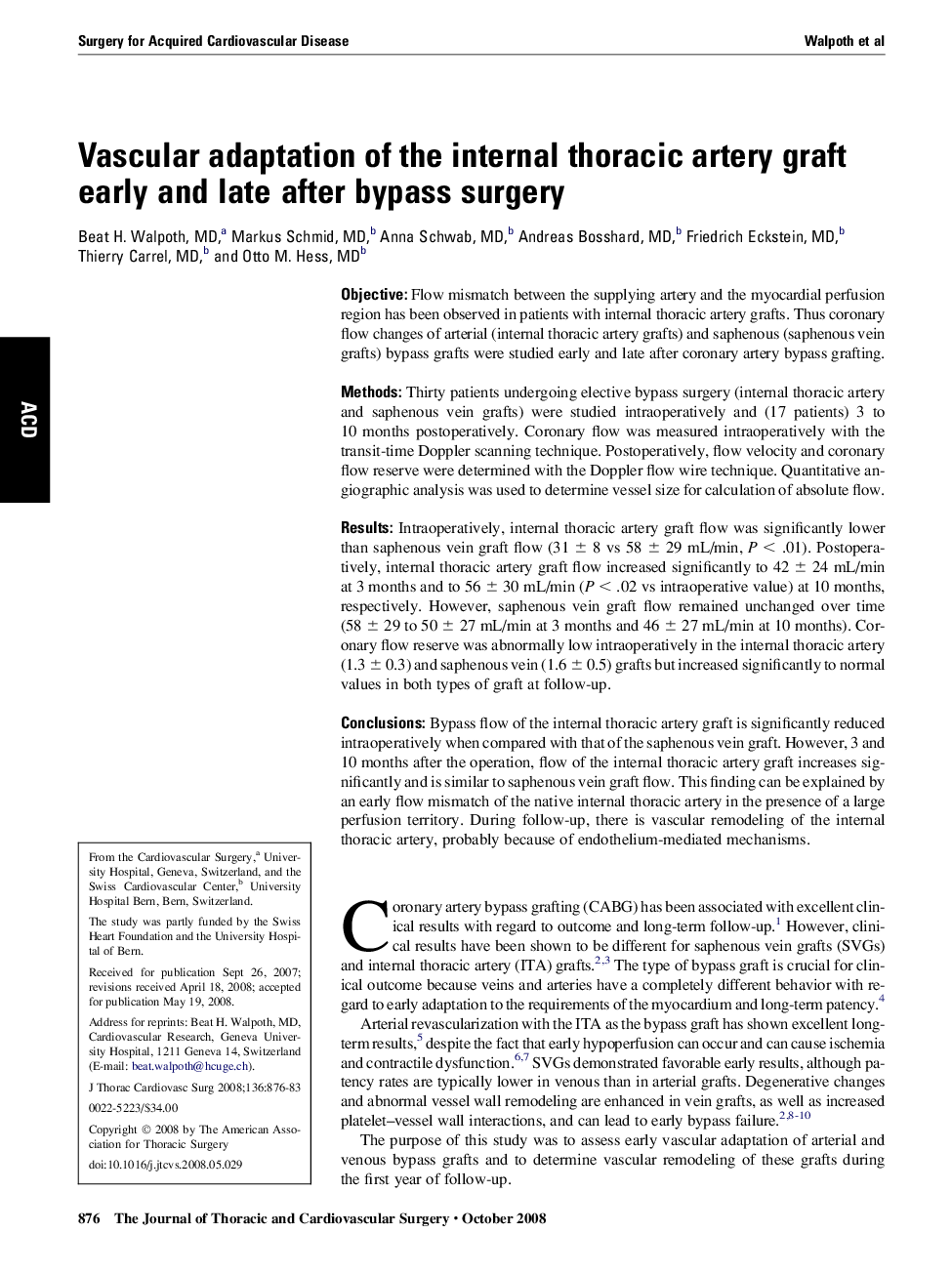| Article ID | Journal | Published Year | Pages | File Type |
|---|---|---|---|---|
| 2982788 | The Journal of Thoracic and Cardiovascular Surgery | 2008 | 8 Pages |
ObjectiveFlow mismatch between the supplying artery and the myocardial perfusion region has been observed in patients with internal thoracic artery grafts. Thus coronary flow changes of arterial (internal thoracic artery grafts) and saphenous (saphenous vein grafts) bypass grafts were studied early and late after coronary artery bypass grafting.MethodsThirty patients undergoing elective bypass surgery (internal thoracic artery and saphenous vein grafts) were studied intraoperatively and (17 patients) 3 to 10 months postoperatively. Coronary flow was measured intraoperatively with the transit-time Doppler scanning technique. Postoperatively, flow velocity and coronary flow reserve were determined with the Doppler flow wire technique. Quantitative angiographic analysis was used to determine vessel size for calculation of absolute flow.ResultsIntraoperatively, internal thoracic artery graft flow was significantly lower than saphenous vein graft flow (31 ± 8 vs 58 ± 29 mL/min, P < .01). Postoperatively, internal thoracic artery graft flow increased significantly to 42 ± 24 mL/min at 3 months and to 56 ± 30 mL/min (P < .02 vs intraoperative value) at 10 months, respectively. However, saphenous vein graft flow remained unchanged over time (58 ± 29 to 50 ± 27 mL/min at 3 months and 46 ± 27 mL/min at 10 months). Coronary flow reserve was abnormally low intraoperatively in the internal thoracic artery (1.3 ± 0.3) and saphenous vein (1.6 ± 0.5) grafts but increased significantly to normal values in both types of graft at follow-up.ConclusionsBypass flow of the internal thoracic artery graft is significantly reduced intraoperatively when compared with that of the saphenous vein graft. However, 3 and 10 months after the operation, flow of the internal thoracic artery graft increases significantly and is similar to saphenous vein graft flow. This finding can be explained by an early flow mismatch of the native internal thoracic artery in the presence of a large perfusion territory. During follow-up, there is vascular remodeling of the internal thoracic artery, probably because of endothelium-mediated mechanisms.
